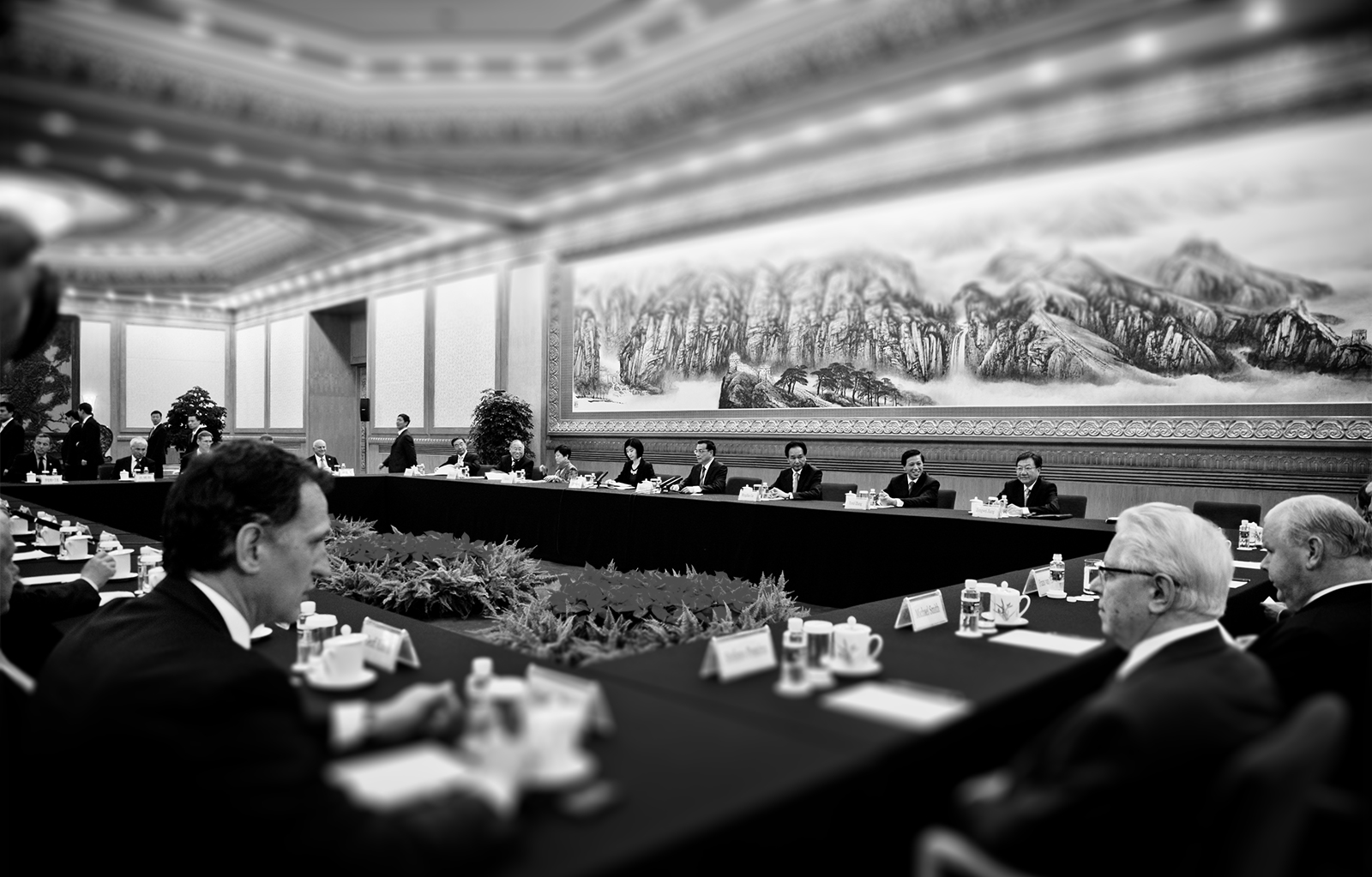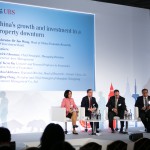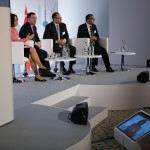2020 FORESIGHT
Rather than getting obsessed with the daily ups and downs of the market, we have always advised taking a step back, and adopting a 3-5 year time horizon for making investment decisions. So it is fair to ask, not just what we expect for the coming year, but what we think the global economy and markets will look like, say, four years from now. If this were January 2020, not 2016, what would we be writing about? And what happened in between to get us there? What follows are not predictions—we don’t pretend to have a crystal ball. It is our assessment of a likely future based on a number of reasonable suppositions, which sheds light on what we see as the principal risks and opportunities that lie ahead.
January 2020—It was the recession we had to have. That may be evident today, at the start of 2020, as we enter a third year of recovery, but at the time—when a wobbly and anxious 2016 finally tipped into two quarters of negative U.S. growth in the first half of 2017—there were plenty who saw it as a catastrophe. In fact, it was a buying opportunity. The contraction was brief, the rebound strong. More important, the downturn planted the seeds of a real global economic rebalancing—discussed by Silvercrest since 2013—that transformed the rebound into a solid and sustained recovery. Today, the S&P 500 stands at 2596, or 27% higher than at the close of 2015, and a 76% gain over its low point in early 2017, with the promise of another good year ahead.
Two concerns dominated markets in early 2016: China’s deepening economic slowdown and the depressed price of oil. Many worried they might trigger a global recession, but their impact, while quite real, was not uniformly negative. The end of China’s over-the-top investment boom certainly hit commodity producers hard, along with makers of construction equipment and industrial machinery. But cheaper commodity prices also meant lower costs for other industries, while Chinese consumer demand for foreign brands, travel, food, and entertainment remained resilient. Continued capital outflows from China, seeking safer returns abroad, also buoyed asset prices in the U.S. and other developed countries.
The shakeout in the oil sector was frightening. The global savings glut meant that many oil producers, in the U.S. and abroad, were able to stay in the game much longer than expected, and kept pumping. However, when oil prices dropped below $30/barrel in early 2016, lenders pulled the plug and a number of players—already living on borrowed time —went bankrupt. Defaults rose, high-yield bond rates spiked, and more than a couple banks wrote off sizeable losses. But the damage to earnings—outside the financial sector—had already been done, and the decline in output helped stabilize oil prices above $40. The survivors saw their earnings improve, and some were even able to snap up prize assets for a song. As in 2015, cautious U.S. consumers stashed some of their savings from the gas pump into their bank accounts; but they also spent more on their homes, leisure, and dining out.
In other words, China’s slowdown and low oil prices produced not just losers, but also winners in 2016. The S&P 500 index, which mixed the good with the bad, stayed flat for a second year, although the high level of uncertainty added plenty of volatility and drama. With dispersion comes opportunity, however, and solid returns could be found in 2016 by buying the market dips, or within the index by selective stock picking (“addition by subtraction”) or long-short strategies.
The Federal Reserve planned to raise interest rates at least four times in 2016, but faced with an imploding oil sector, it demurred throughout the spring. By summer, with the consumer and service economy still on track, it regained its confidence and initiated the first of three 25 bps rate hikes, ending the year with the Fed funds rate at 1.00%. As intended, this reined in the rate of job creation by about half. But due to hidden slack in the labor market, wage gains didn’t keep up, and consumption growth began to subside. Inventory levels, already elevated since late 2015, began rising relative to slowing sales. The Fed rate hikes also strengthened the U.S. dollar, which made it harder for companies to exercise pricing power, widened the U.S. trade deficit, and reduced the value of U.S. corporate earnings abroad. Alarmed at these developments, and worried that further Fed rate hikes would exacerbate them, companies started slashing output and investment. Sluggish GDP growth of 1.0% in 4Q16 nosedived to –3.5% in 1Q17, followed by –1.8% in 2Q17. In doing so, GDP followed a common path for a short and shallow recession, typical of those driven by inventory corrections.
After so many false alarms, so many dodged bullets, the recession of 2017 caught both markets and the Fed somewhat by surprise. The S&P 500, which normally would have anticipated a recession by at least a quarter, plunged –28% in the first two months of 2017, as mounting evidence made it clear this was not merely another winter “pause”. In March, the Fed reversed course and cut rates by 25 bps. After the bombshell Q1 GDP figure was released, it swallowed hard and cut the remaining 75 bps, putting rates back to zero.
The rebound was not long in coming. Ironically, the first 25 bps cut was enough. By removing the specter of additional rate hikes, it halted the dollar’s rise, and prompted companies to take a second look at their plans. Unlike 2008, when they spent years digging out from debt, U.S. companies and households had strong balance sheets and could turn the spending spigot back on as soon as sentiment shifted. Nor was the banking system lacking in liquidity. Cheap energy prices—oil recovered to $44/barrel after a brief panicky dip back below $30—also helped support a quick rebound. By June, the S&P 500, sensing a shift in the wind, had recovered nearly all of its losses, and actually ended 2017 up +4.5%. In the meantime, GDP bounced back +3.2% in 3Q17 and +2.2% in 4Q17. The recovery followed the normal play book for a rebound from an inventory correction.
It was the global reaction to the U.S. recession, however, that really laid the foundation for a sustained recovery. Although it became pop wisdom to blame the Fed for cranking rates up too high too fast, the policies of other central banks had put the Fed in a very difficult position. For some time, Japan, the Eurozone, and, increasingly, China had been weakening their currencies against the dollar, in a bid to revive their own anemic growth by grabbing a bigger share of global demand, in particular the U.S. consumer. This beggar-thy-neighbor stance made the U.S. economy more vulnerable to the Fed’s tightening measures than normal. In other words, they helped kill the goose that laid the golden eggs. When U.S. consumer demand evaporated with the recession, our trading partners came face to face with the reality that their existing strategies were played out, and that real solutions would have to be internal, not external.
For Japan, the Trans-Pacific Partnership (TPP) trade deal struck in 2015 was a godsend, not so much for the export opportunities it created but as a catalyst for long-overdue domestic reforms. TPP set the stage for Japan to free up its ossified farming sector and labor markets, and brought more women and immigrants into the workforce. These changes took time to bear fruit and couldn’t completely offset headwinds from a shrinking population and enormous debt burden. However, the productivity gains they unleashed represented real progress for a major economy stuck in neutral for two decades. Japanese share prices continued to reflect a renewed confidence that a more innovative and dynamic Japan would find a way to stay relevant and somehow navigate the minefields ahead.
The surprise popular vote by Britain, in early 2017, to leave the European Union sent shockwaves through the region’s political establishment. Even as further easing measures by the ECB pushed the Euro below parity with the dollar in 2016, the promised turnaround proved elusive, with the region sinking into a morass of high youth unemployment and recurring debt re-negotiations. The flood of refugees from the Syrian civil war placed additional strain on the system of open borders and open markets, and bolstered the cry for radical alternatives. If the U.K. hadn’t voted to go its own way, some other crisis would have brought matters to a head. The Euro held together, but after “Brexit” and the U.S. recession hit, Germany could only turn a blind eye as other Eurozone countries broke with austerity, ignored their debt limits, and turned on the fiscal spending taps. The assumption that Germany would end up paying the bill amounted to a kind of backdoor internal rebalancing. It was better for the U.S. than Europe trying to export its way to growth, but it left many long-term issues unresolved.
China, by 2017, was facing a real crisis. Like with Japan in the 1990s, when China turned on the fiscal taps, it ended up filling a hole rather than driving growth. As output stalled and even contracted, dragged down by overcapacity and bad debt, China faced a wrenching choice: devalue and see living standards decimated, at the risk of sparking a currency war it might not win, or draw on its $3.5 trillion foreign exchange reserves to support consumer purchasing power. It opted for the latter, and began (starting in 2017) running large trade deficits, not by desire, but because it was the least-bad alternative. This bought China time, and provided a very helpful boost to the rest of the global economy, including the U.S. The question in 2020 is whether China can—after much delay—adopt the kind of market reforms desperately needed to unlock real productivity gains and reignite growth, or whether it will slip into a prolonged period of stagnation, like Japan did.
The old global growth model, both before and after the 2008 crisis, looked to the United States to drive consumer demand, and China to build up the output to meet that demand, with everyone else finding some supporting role in that equation. The result was chronic trade imbalances and massive stockpiles of U.S. dollar reserves. The 2017 recession forced an adjustment that greatly reduced these imbalances, transforming them into new sources of global demand. The impact on emerging markets varied a great deal. Some, like Mexico, were able to ride the strong U.S. recovery, while others who had thrived on supplying China’s investment boom, like Peru and Chile, struggled to adapt. For some, like Brazil, what looked like a frog turned into a prince. Brazil, which suffered a grueling depression in 2015 and 2016, after it essentially spent the proceeds of an oil boom that never happened, was forced to get back to basics, implementing far-reaching tax, labor, and spending reforms that gave it a new competitive edge. After hitting rock bottom, Brazil in 2020 is one of the most interesting comeback stories on our radar screen.
The United States, in contrast, has been able to coast on far more supportive economic winds. That’s fine for today, and even the immediate future, but may be storing up trouble down the road. When the Democrats retook the Senate in 2016, it meant continued political gridlock, no matter which party won the White House. From 2016 to 2020, Congress has been unable to make progress passing tax or immigration reform, or sharpening the country’s spending priorities—measures that could make a material difference in raising productivity and the economy’s long-term potential growth rate. Nor could it agree on a fiscal stimulus package in response to the recession. In the short-run, that may not have been a bad thing—by the time stimulus would have kicked in, the recovery was already well underway—but it did shift the policy response entirely onto the Fed’s shoulders, which may prove problematic in time.
The Fed’s decision to cut rates back to zero was, as we have mentioned, probably overkill, at least as far as getting the economy moving again. But the Fed’s mandate, in addition to price stability, is full employment, and much as in 1990-91, the jobless rate continued to rise well after the recession was over. It peaked at 7.3% in 2018, and has only gradually fallen to 6.4% at the beginning of 2020, leaving the Fed no compelling reason to raise rates. The result is rather astonishing: the Fed funds rate has been virtually zero for nine out of the past 10 years. We no more worry about “inflation” than we do about polio or smallpox.
The years ahead, however, will present new challenges. By early 2021, we project that unemployment should fall to 5.0%, and wage and inflationary pressures will begin to rise. Up to now, low interest rates have supported historically elevated stock market valuations, even as risk premiums have narrowed. A vibrant economy can absorb higher interest rates, but the inability of America’s politicians to agree on steps to facilitate and unleash greater productivity may limit the rate of growth that can be sustained while keeping inflation in check—forcing the Fed to hike rates higher and faster. With its balance sheet as large as ever, the Fed will have to rely on the mechanism it barely experimented with in 2016: raising deposit rates on reserves, and essentially paying banks not to lend. Will that work, especially at higher rate levels? We’re not sure. If not, we may have to crack open our old textbooks and reacquaint ourselves with a concept investors have all but forgotten: inflation. But that still lies some ways into the future.
So what advice would we give investors in 2016, knowing what lies ahead? We would tell them that, inevitably, the cycle will turn and a recession will come—but it won’t be the end of the world. The U.S. economy, and markets, will be poised to bounce back quickly, and many investors—digging in for a repeat of the 2008 crisis—will miss out. So why not take your money out of the market, and wait for the storm to blow over? Because investors who try to time the market too precisely often end up missing out on significant returns both before and after a downturn. Even an investor who simply stayed in the market through 2016-2019, through good and bad, with an eye to the long-term, saw their U.S. equities portfolio make an annualized total return (including dividends) of +8.2% per annum, while cushioning temporary losses through appropriate diversification.
BACK FROM THE FUTURE
January 2016—It’s tough making predictions, especially about the future. Of course, we don’t know “what lies ahead,” not precisely, but the takeaways from our look forward remain the same. A longer-term narrative about the future helps us better understand the economic data and market performance we see today, in 2016. The strong jobs report for December 2015, which far surpassed expectations, provides an important counterpoint to some of the weaker numbers that have rattled market lately. This is a U.S. economy whose cup remains at least half full.
The U.S. created a robust 292,000 jobs last month and saw 50,000 more added to prior months’ totals. The total number of jobs created in 2015 (2.65 million) fell shy of 2014 (3.1 million) but still made for the second highest year and the two best back-to-back years since the Internet boom in 1999. Services led the charge, but construction added a solid 263,000 jobs, and even the struggling manufacturing sector eked out a small gain of 30,000 for the year.
Job gains are a key source of the Fed’s confidence in continued economic growth. Besides reflecting continued momentum in large segments of the U.S. economy, job growth helps to sustain it. The critical factor in driving steady consumption growth for the past several years hasn’t been rising wages or consumer borrowing. It has been the steadily rising number of workers taking home a paycheck. As a result, core retail sales were up +0.5% in November, +3.6% higher than a year ago, with restaurant sales up +6.5% compared to last year. Although existing home sales stumbled in November, and December auto sales came off their previous sizzling heights, consumer confidence remains close to the strongest it’s been since the recovery began.
In contrast, the mining sector (which includes oil) shed 131,000 jobs in 2015—tiny compared to overall job gains but a sharp reversal for what had been a booming and high-paying industry. New orders for mining and oil drilling equipment were down –46% in November, compared with a year ago. The stronger dollar, which ended the year +11% higher than a year ago, has put additional burden on manufacturers. In December, the ISM manufacturing survey sank to 48.2, clearly in contraction, and the weakest reading since the last recession in June 2009. Industrial production fell –0.6% in November, down –1.2% from last November, the first year-on-year decline since December 2009.
The disparity between segments of the U.S. economy that are thriving, and others that are really struggling, is striking—and for many investors, unnerving. As 2015 came to a close, the S&P 500 index stood at 20x operating earnings, on a 12-month trailing basis. As we have noted repeatedly over the past year, such elevated valuations make stocks vulnerable to correction whenever the day’s headlines are disappointing or unexpected. We see several such bumps ahead. We think consensus earnings estimates for 2016, which anticipate a strong and immediate rebound in the energy and materials sectors, are unrealistic and we would not be surprised if 4Q15 GDP growth, while positive, fell short of 1%.
However, we also recognize that cheaper inputs are positive for many other segments of the economy, and that there have been many occasions (1952, 1967, 1985, 1995, 1998, 2003, 2012) when a contraction in manufacturing, as we are seeing now, did not translate into a recession for the broader U.S. economy. We see opportunity for investors to look within, rather than at, the index for positive returns, relying on fundamental, bottom-up analysis to separate the winners from the losers. Most importantly, we have a roadmap—a coherent, long-term narrative centered around the disparate impact of global rebalancing—that explains and predicts a great deal of what we are already seeing, and keeps our eyes firmly fixed on the pathway ahead.
Originally by: Patrick Chovanec, Source: January 13, 2016, Silvercrest Asset Management Group








